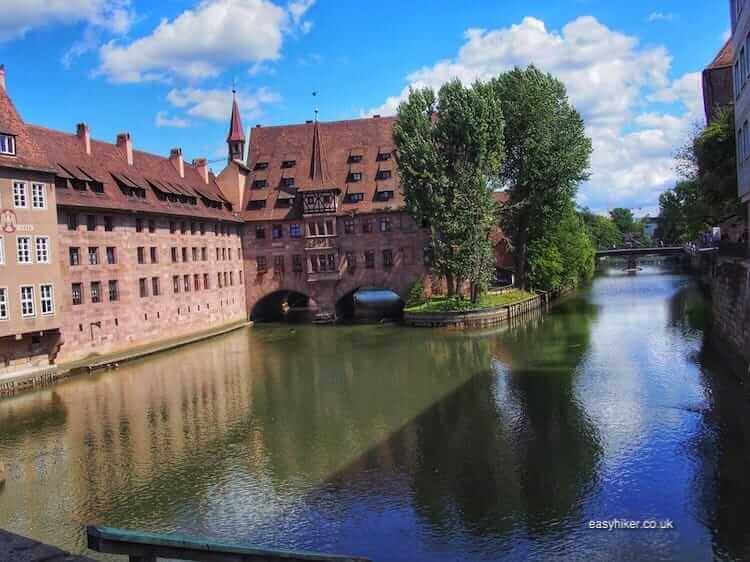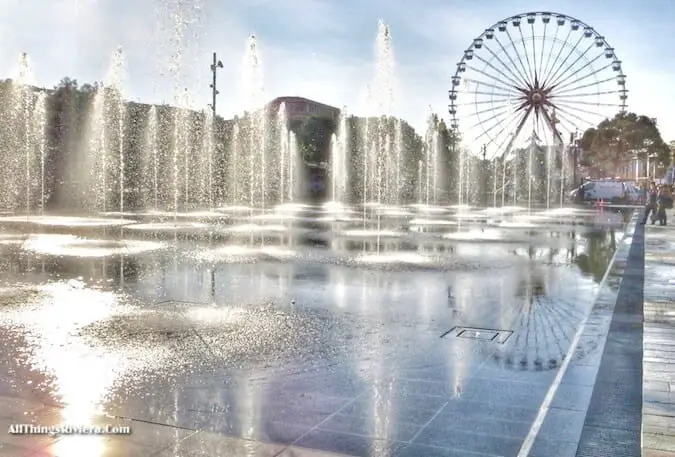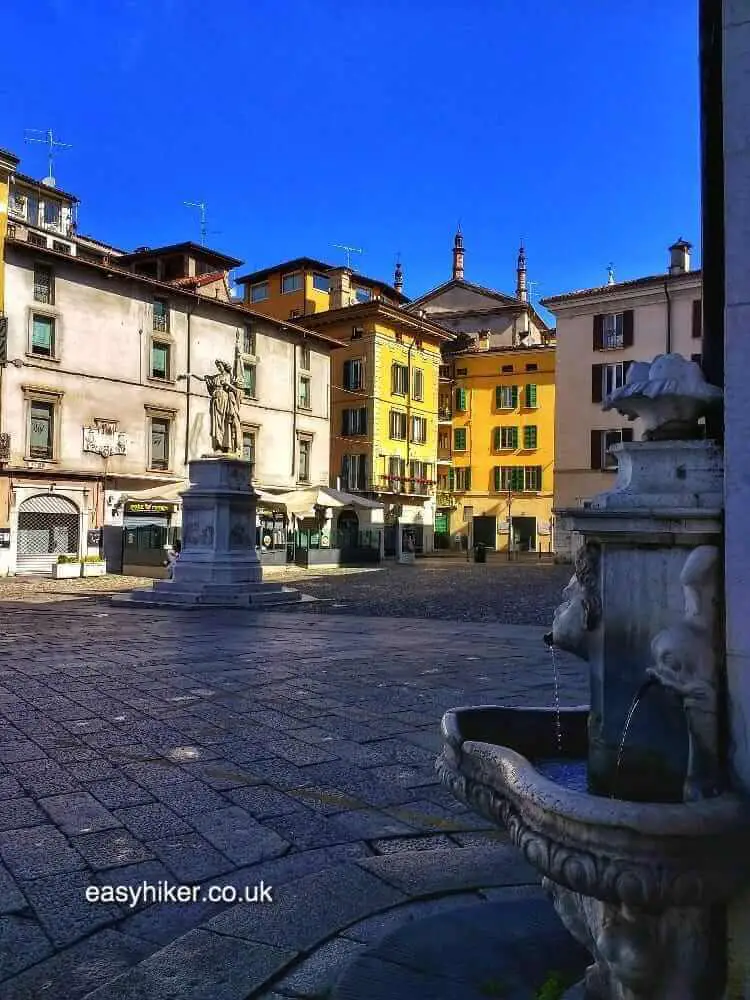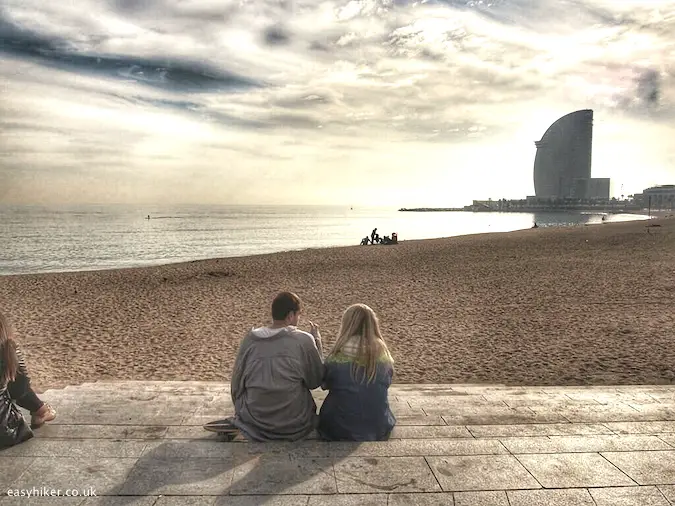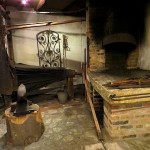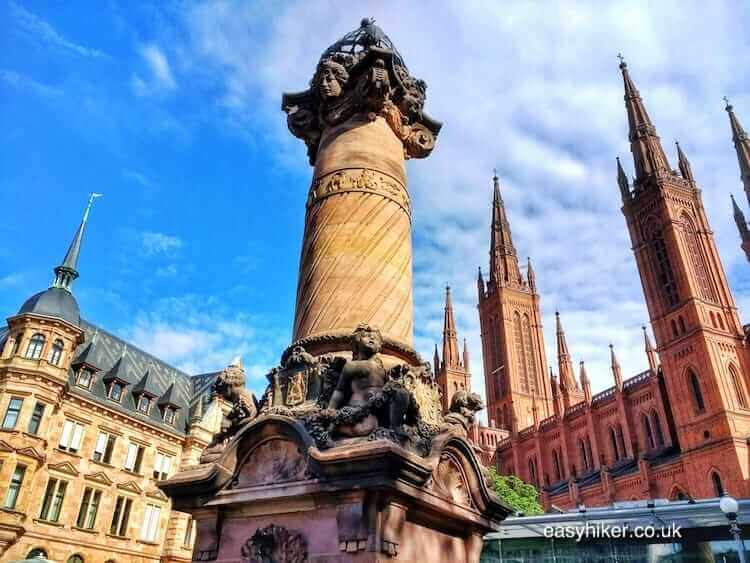Nuremberg is one of Germany’s most storied cities. The town’s rich history reached its apogee in the Middle Ages when Nuremberg was the unofficial capital of the Empire (the castle on top of the hill was where the Imperial Parliament met) …
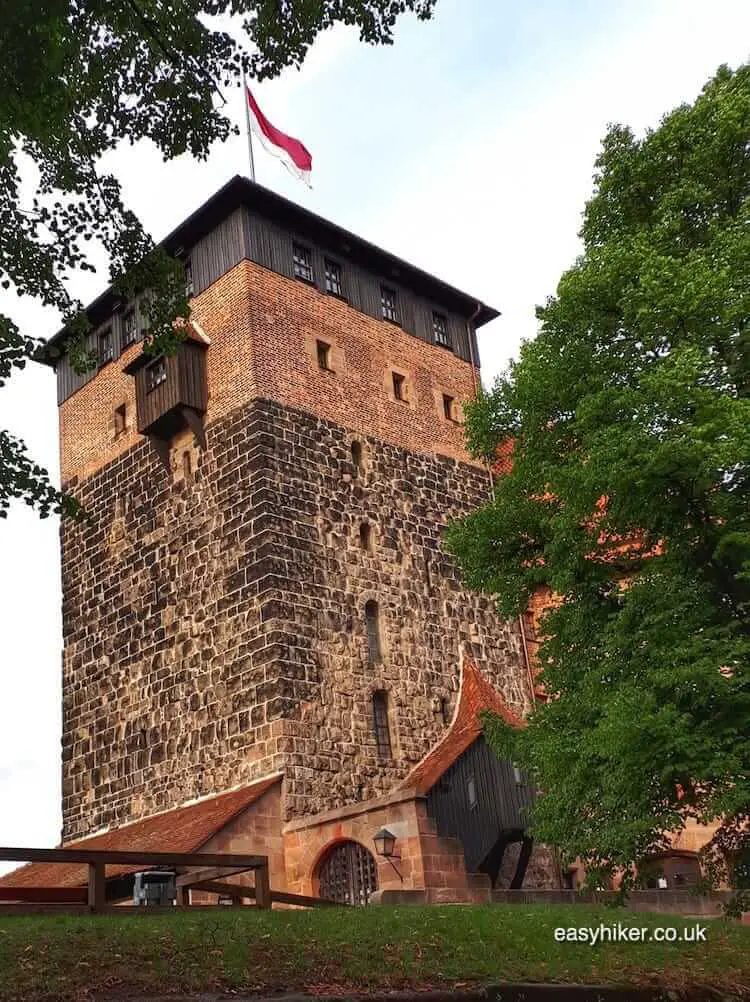
… when Albrecht Dürer, Northern renaissance painter par excellence, plied his trade just outside the castle walls …
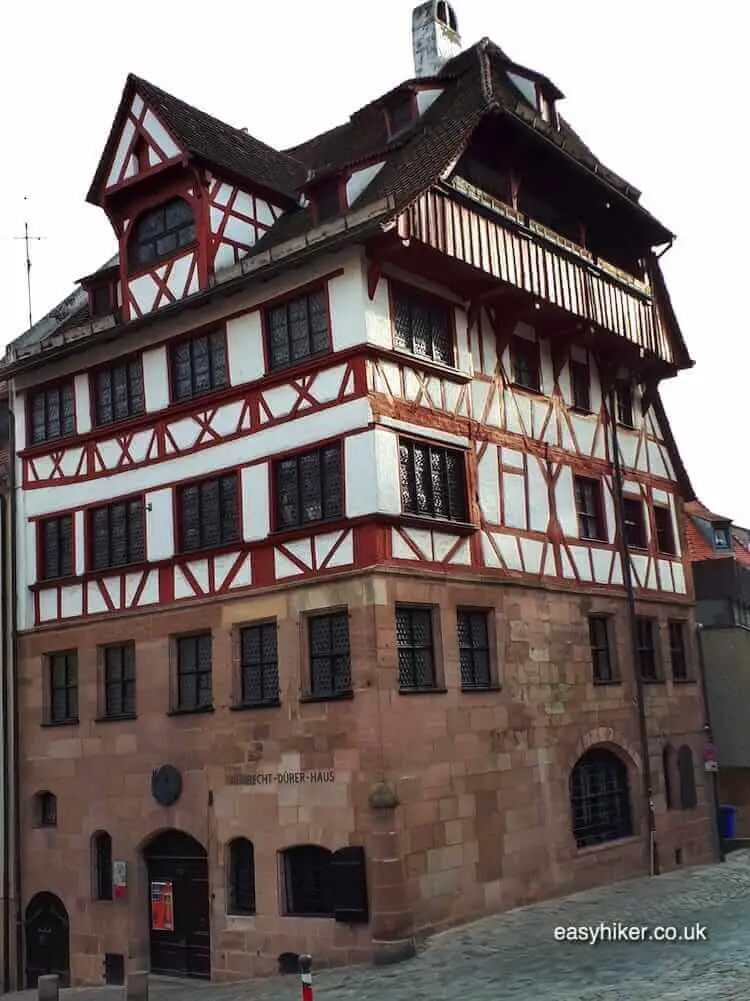
… and when the shoe-making poet Hans Sachs formed his band of Meistersinger merry men.
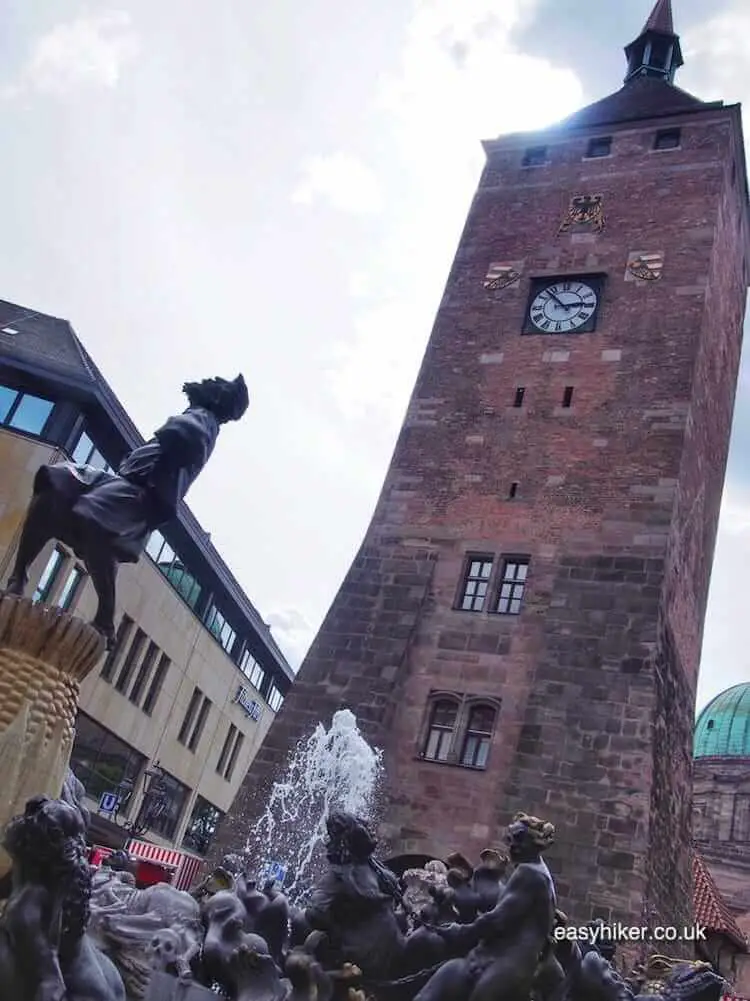
But I am going to bet that, when you close your eyes and think of Nuremberg, you will see something else: storm troopers on the march under a “Cathedral of Light“.
Nuremberg, after all, was where the Nazi party went to go into rapture.
Of Nazis and Nuremberg
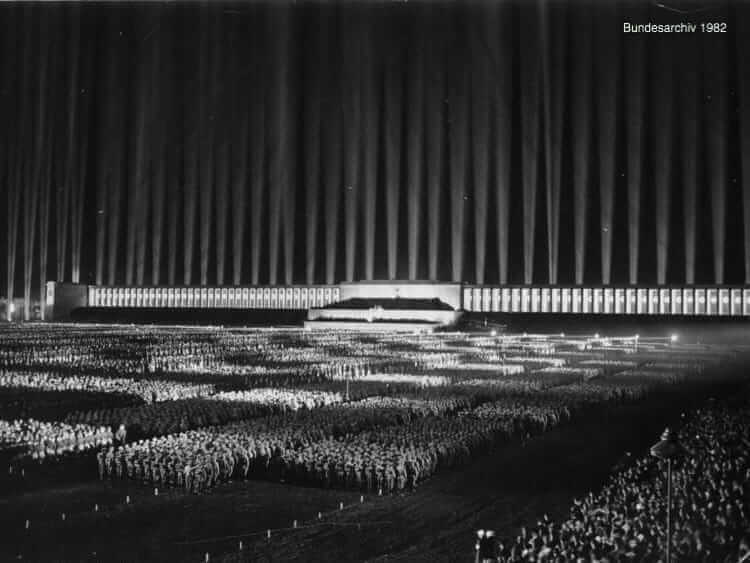
Nuremberg was Hitler’s favourite town, and he began to hold the annual party gatherings– the Reichsparteitage – here in the 1920s when his party was little more than a gang of pub brawlers and thugs. (One might argue with a certain degree of justification that they never went very far beyond that.)
Hitler’s love for Nuremberg had historical reasons – it was the place, after all, where the medieval Reich had celebrated its unity – but also practical ones.
When the Nazi party was still held in disdain across many regions in the Weimar Republic, it had already gained a foothold in Nuremberg, and many people in influential administrative positions (including the municipal police) watched the party grow with tender sympathy, if not more.
From 1933 (when the Nazis seized power) to the outbreak of WWII, the Nuremberg rallies were yearly events, and the film that Leni Riefenstahl made about the 1934 edition is responsible for most of the images that float through our minds when we hear the city’s name.
Triumph of the Will, by the way, was the official theme for the 1934 Reichsparteitag: all Nazi rallies were themed in this way. The 1939 edition, for example, was called the Rally of Peace – and had to be cancelled at short notice because the day before it was meant to start the Nazis had invaded Poland. (No: this is not a plot line from Charlie Chaplin’s The Great Dictator.)
After all of this, one would think that Task Number One for Nuremberg’s new masters following WWII – foreign occupiers and native democrats – would have been to erase all Nazi memorials from the face of the city.
But this is not what happened. Curiously, Nuremberg – of all towns in Germany – is the place in the country to visit traces of the old Nazi architecture.
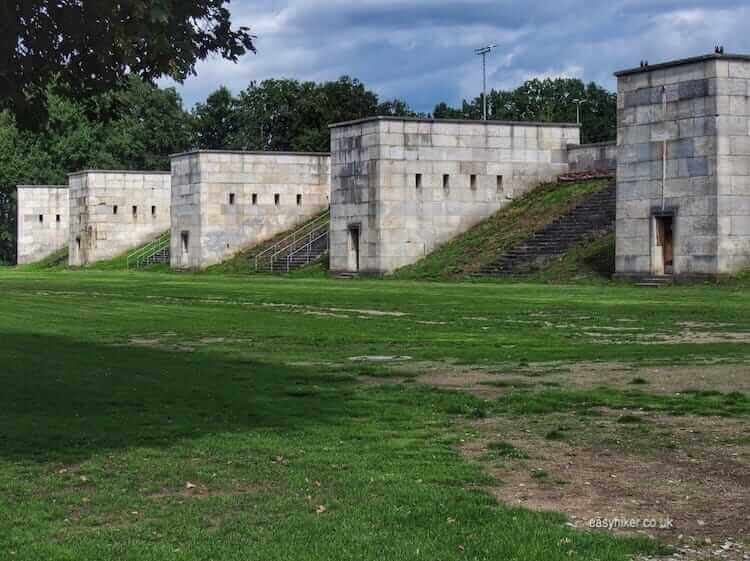
And the Zeppelinfeld, the area where the annual Nazi rallies were held: just a short tram ride away from the town centre (lines 6 and 8), is still recognizably its old self.
Several routes around the complex have been laid out to provide the curious visitor with an introduction into that strange period before WWII when Germany was gripped by nationalist frenzy and megalomaniac delusions as if everybody had been fed on a diet of magic mushrooms.
The problem with unearthing traces of Nazi architecture on today’s Zeppelinfeld is not that so much of this architecture had been destroyed: the problem is that so little of it was completed.
What you don’t see in Leni Riefenstahl’s film is that the Nazi rallies were all held in what was very much a makeshift site at the time: Hitler and his master architect Albert Speer had much bigger plans for what was to become of the Zeppelinfeld. Big, big plans.
The street from the main thoroughfare to the Zeppelinfeld would not just be a “Grosse Strasse”, a “big street”, but the biggest street that the world had ever seen: 60 metres wide, 2 km long …
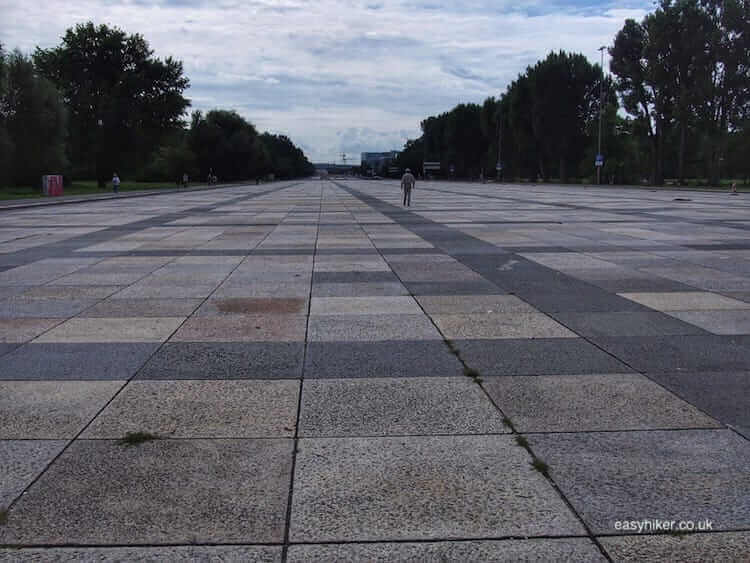
… and paved with plates that were exactly as long as two Prussian goose steps (1.2 m): to produce the straightest possible line of marching storm troopers.
And featuring an entrance that was framed by the biggest pillars anybody had ever built, higher than the highest church in town. Neither Big Street nor Big Pillars, however, were ever finished.
And to the right side of the Grosse Strasse, Speer was to build the Deutsches Stadion. Where they would hold the Olympic Games not once, not twice, but each time! Every four years until all eternity!
Nuremberg would, after all, be the New Athens. The German Stadium would therefore be a copy of Athen’s Olympic Stadium, open on one side, only bigger. Much, much bigger. In fact, it would be the biggest stadium ever built, seating 400,000 spectators.
But only the excavations were ever completed before WWII began. And after the war, Nuremberg had no money and no potential use for a stadium big enough to pack in its entire population.
So they let the water slowly gather inside the ditch and turned the site into a pond.
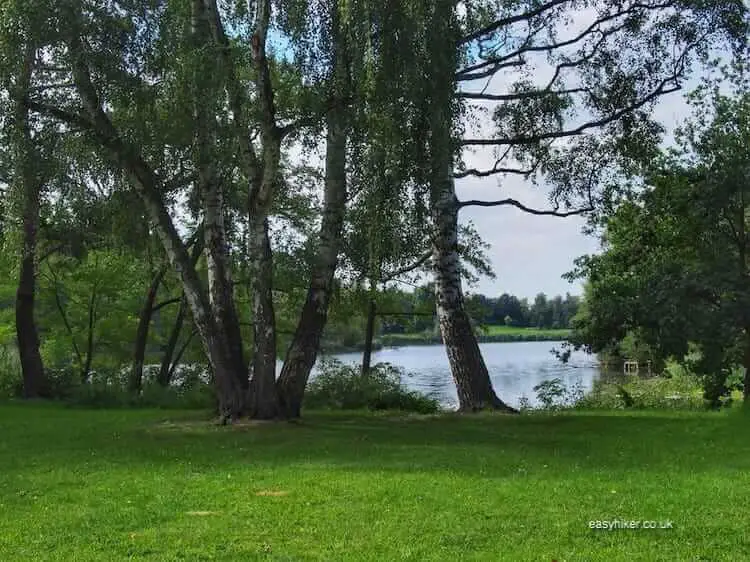
The Congress Hall project, meanwhile, advanced much further – so far, in fact, that it looks pretty much the finished article from the outside. Much of the inside, however, never got far beyond the planning stage.
One can discuss what evil architecture would look like, but it should be easy to agree that it would not look like this. The Colosseum-inspired Kongresshalle is not even unattractive – just banal and empty of anything that makes a building great or even interesting.
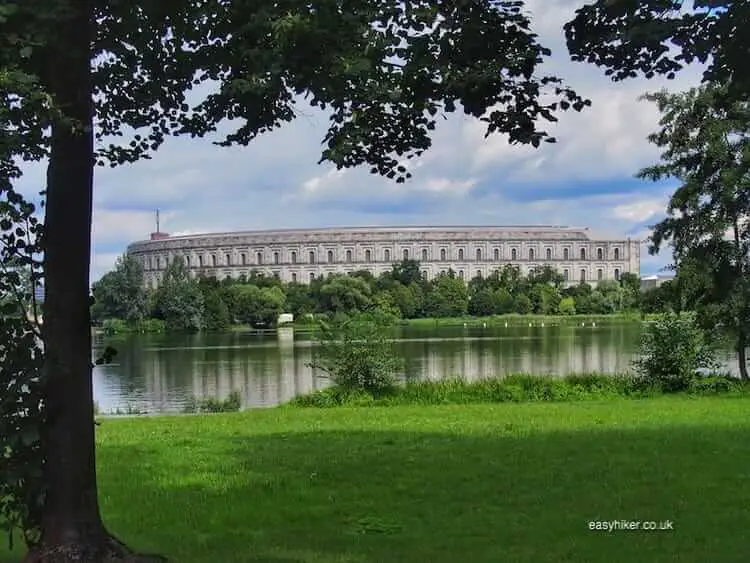
Which takes us straight to the icing on the cake: the Zeppelinfeld where the actual rallies took place. The temptation to stand where Hitler stood is irresistible, addressing what, today, looks very much like an empty car park. (“Bezik! Bezak! Datshuten … ngggg … datshuten …”).
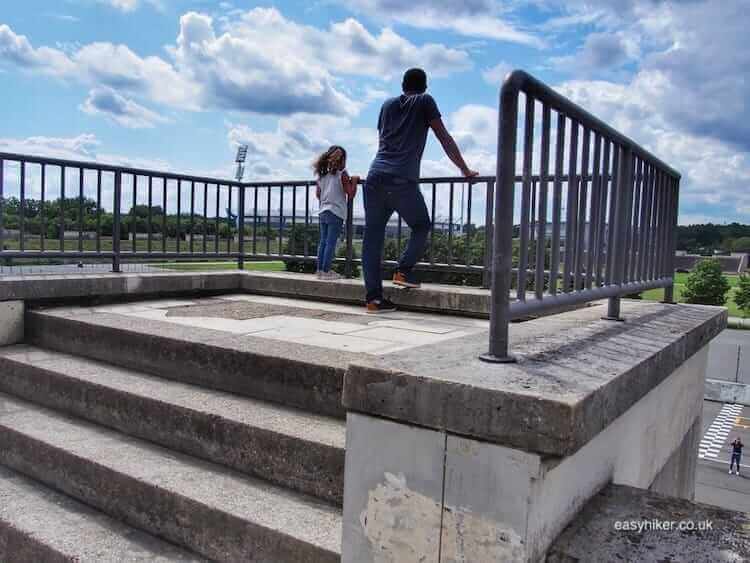
Conversely to so much else in the area, the grandstand from where Hitler spoke was finished, albeit poorly.
First cracks in the stone of Nazis and Nuremberg were already developing in 1938 when Hitler last spoke here (no rallies were held during WWII). As you can see from old pictures, colonnades once extended down the entire length of the grandstand, but they have all been torn down.
This is a poor record for a structure which is less than 100 years old. The white, untreated limestone was meant to evoke antiquity, of course, but they should have started by importing Greek weather for their New Athens before importing its construction materials.
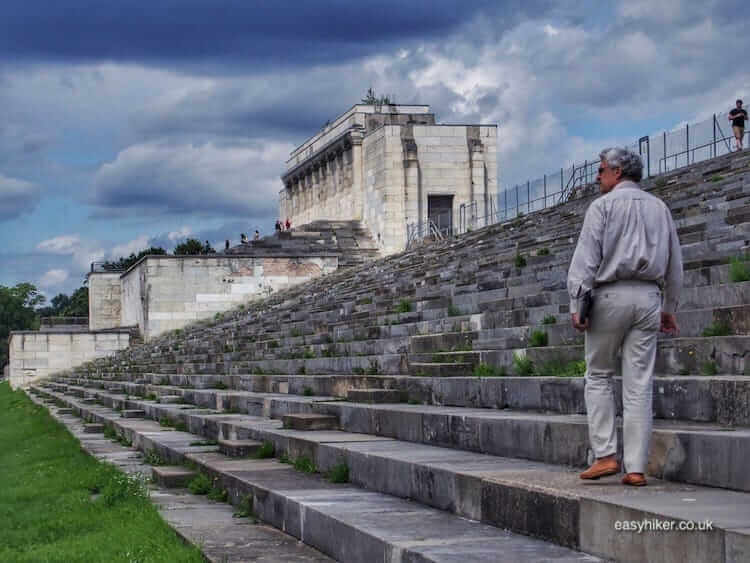
There are many places in Nuremberg with a Nazi past. 200 m away from the central station, for example, you can find the Hotel Deutscher Hof where Hitler used to stay during his rallies …
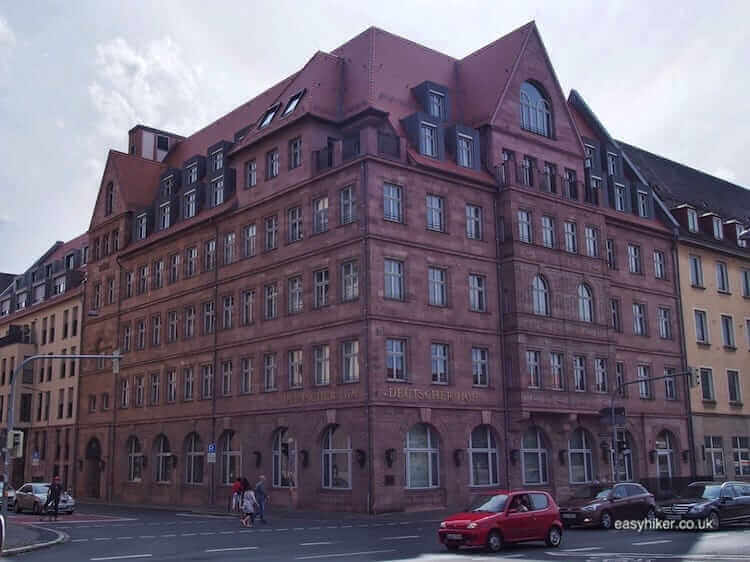
… and, next door, the opera where he loved to watch The Meistersingers, Richard Wagner’s most openly fascist work. That’s probably why it was also Hitler’s favourite.
To its credit, modern-day Nuremberg is making the best of its uncomfortable history – largely, by treating it without too much solemn gravity: a sports stadium has been carved out of the Zeppelinfeld where American troops used to play football and where the local team still plays, there are pedalos on the lakes as well as allotments all around them, and when we visited, the city’s annual funfair was in preparation.
The only wrong tone at the site is hit by a plaque on the Zeppelinfeld’s grandstand that remembers the day when Nuremberg was “liberated“ from Nazi rule. That, I found, was a bit rich, all things considered.
The Zeppelinfeld has been well preserved, but the modern-day city has changed, changed utterly. When Jean-Paul Sartre and Simone de Beauvoir visited Nuremberg in 1934, they were highly annoyed not so much by the swastika flags that were draped around nearly all of the city’s windows – although that surely did not help – but by the pure Germanness of it all.
“Massive Teutonic men in lederhosen slapping their bare thighs and eating enormous heaps of pork sausages” as de Beauvoir later remembered in one of her autobiographical works.
You could no longer witness anything like that in today’s Nuremberg. Instead, it looks very much like any other German town (if prettier). Normalcy has triumphed rather than “the Will”. That, surely, must count as a victory over the demons of the past.
